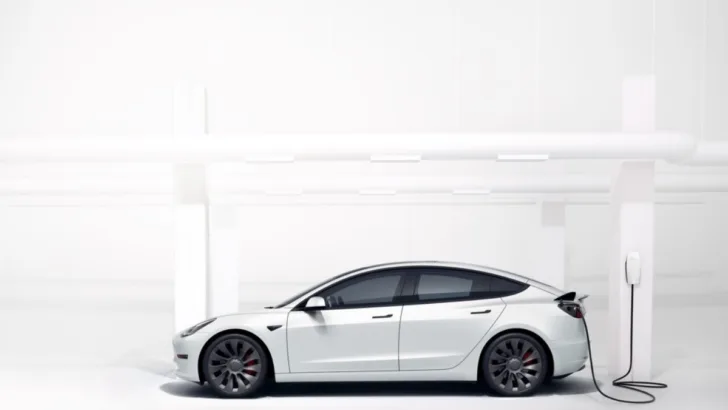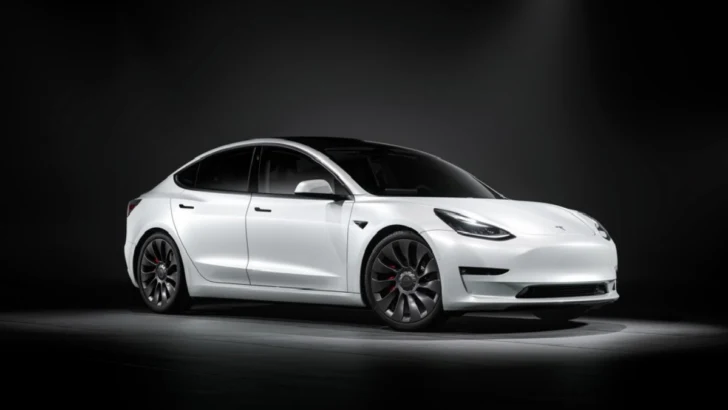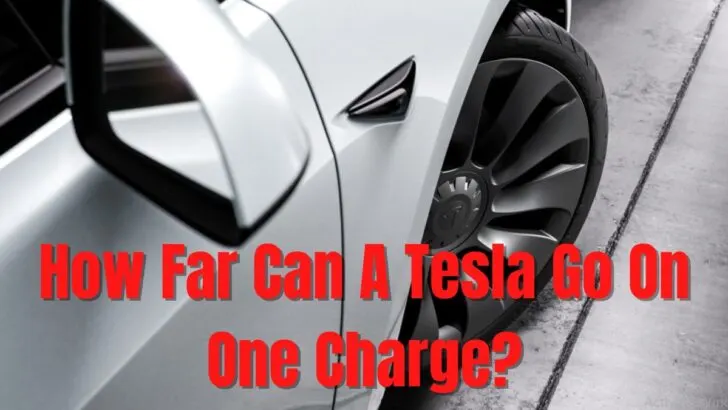The battery pack is essential to your Tesla electric vehicle’s powertrain, as it determines how long you’ll be on the road between charges.
Tesla has been pioneering their state-of-the-art batteries that promise ranges never seen before. And, according to the company, what we have now is just the tip of the iceberg – there’s more to come.
If you’re a long-distance driver and wouldn’t appreciate the frequent stops at the charging stations, you may wonder how much range you can get with each Tesla. If so, here’s all you need to know.
A Tesla’s range on a single full charge depends on the model’s battery capacity and factors such as your driving habits and road and weather conditions. Generally, the lowest range you can get with a Tesla on one charge is around 270 miles, and the highest is an impressive 405.
And that’s not all. The company estimates that their future cars will offer more than 500 miles of range across all models.
How Far Can Each Tesla Model Go on One Charge?
The distance your Tesla covers on a single charge varies depending on external and internal factors within the car.
Using any power-intensive appliances such as the air conditioning (AC) and aggressive driving will ultimately affect your Tesla’s range.
As such, here are the average EPA-estimated distances that Tesla electric vehicles cover on one full charge.
- Model S Long Range – 405 miles
- Model S Plaid – 396 miles
- Model 3 Long Range – 358 miles
- Model 3 Performance – 315 miles
- Model 3 RWD – 272 miles
- Model X Long Range – 348 miles
- Model X Plaid – 333 miles
- Model Y Long Range – 330 miles
- Model Y Performance – 303 miles

Tesla Electric Vehicle Range is Only an Estimation
You should note that the above figures are EPA estimates achieved in ideal driving conditions. Consequently, they will tend to be lower or fluctuate depending on:
- How you maintain and charge your battery over its lifetime
- How your Tesla’s onboard computer calculates the range
- Your environment
- Personal driving behaviors
Additionally, Tesla ranges aren’t fixed and may go higher or lower, as the cars are software-based. Any improvements in their efficiency will inadvertently improve their range.
Conversely, any software limitations will lower their ranges, but there’s a high likelihood that this might not happen in the foreseeable future.
Tesla aims to get better ranges, and it is evident in the recent over-the-air update. Tesla added features that compute humidity, tire pressure, and wind direction to give their EVs better range estimates.
In fact, range anxiety shall be a thing of the past if Tesla continues pushing these updates at the current rate.
What’s the Best Way to Gauge My Tesla EV’s Range?
The best and most accurate way to gauge your driving range is by using the Energy app on your Tesla EV’s touchscreen.
The app constantly analyzes how you drive and uses the data to give you a personalized range estimate. It can also use the data to forecast any charging needs for specific trips.
External Factors Having the Biggest Influence on Tesla Range
Fossil fuel-powered cars have been around for centuries, and driving one has its advantages.
With these gasoline or diesel-powered vehicles, you don’t have to worry about your driving habits or how much fuel you use due to the millions of gas stations around the country.
On the other hand, you need to exercise caution when driving electric cars. With a Tesla, be aware of all possible charging stations along your route to ensure you get there before running out of battery.
Also, consider the charging systems available at the station.
If you’re in a hurry, go to a Supercharger, as it charges to full capacity in less than 30 minutes. On the other hand, it takes a Destination Charger 1-12 hours to charge your EV’s battery pack fully.
If you’re a Tesla driver, you may have noticed that it’s challenging to match the EPA-estimated ranges. Here are external factors that have a significant influence on your driving range.
Your Driving Style
Tesla does a fantastic job of accurately predicting the remaining battery charge or range. However, so many factors, some of which aren’t measurable, impact your Tesla’s range. One such factor is your driving habits.
In most electrical systems, the greater the electrical load, the higher the power consumption.
Constantly using higher powertrain performance features in your Tesla pushes the car’s acceleration and top-end speed to the limit, reducing its range.
Tesla knows that driver habits and irregular driving patterns cause their range to vary. Therefore, the company feeds drivers information on the current and projected range and energy usage through the trip odometer.
And you can find the projected range figures on your car’s instrument cluster, the touchscreen, or Tesla mobile application.
Are you happy about your Tesla’s range? If not, here are some factors that are negatively affecting your range.
- Stop and go driving
- High driving speeds
- Uphill driving
- Frequent short trips
- Inclement weather, such as headwinds, rain, and snow.
Cold Weather
Batteries store electrical energy in chemical form for future use. And these batteries rely on chemical reactions to convert the stored energy to usable electrical energy in your car.
During cold weather, a Tesla lithium-ion battery pack’s efficiency is significantly reduced due to the extra energy demands to keep them warm.
Also, cold weather lowers the regenerative braking ability of your car, lowering the energy feedback to the batteries. And as much as you can’t control the external factors, here are ways you can mitigate them.
- In cold weather, plug in your Tesla whenever possible to aid the battery in retaining some heat.
Your car won’t overcharge since it has an onboard computer that limits the charging when the battery pack is full. - Plug in and charge your Tesla when preconditioning the battery before driving off.
- Lower the times you use air conditioning and heat within the car. Instead, use seat heaters to maintain cabin temperatures at comfortable levels.
High Temperatures
Temperatures above 100º F (43.3º C) can lower your lithium-ion battery’s efficiency by as much as 40%. Tesla cars are lithium-ion battery-powered and have optimal performances when the batteries are around 68° F (20 °C).
Any temperature higher than this causes greater energy reactions within the battery, degrading it faster. In fact, very high temperatures may overcharge and damage your batteries.
Luckily, Teslas have an inbuilt thermal management system that kicks in when cabin and battery temperatures exceed their rated limits.
Your Charging Habits
Poor charging habits impact your Tesla’s range negatively. If you frequently go on long trips, chances are that you’ll consistently charge your car to ensure it has enough range to reach your destination.
For some people, using a Supercharger to recharge is more beneficial as it takes less than an hour to charge the batteries.
However, the sudden burst of electrical power is harmful to your batteries, and Tesla recommends that you should avoid frequent charging through the Superchargers.
Instead, you should use a Tesla High Power Wall Connector (HPWC) or a Destination Charger. The two are slow, with the HPWC providing close to 170 miles per hour of charge for a Model S.
On the other hand, a Destination Charger gives you 30 to 44 miles of range for an hour of charge. But as slow as they are, HPWC and Destination Chargers do not strain the battery prolonging its life.
Additionally, Tesla recommends only charging your EV to an appropriate charge limit and nothing more.
Additional Tips to Improve Your Tesla Range
Lower Aerodynamic Drag
Aerodynamic drag may seem negligible, but it’s not. The higher it is, the more your car strains to break the wind.
As a result, Tesla recommends that you remove any roof or rear racks when you’re not using them.
Also, you can change your Tesla’s air suspension to “low” or” very low” when driving at highway speeds. Doing so lowers your EV front height and, consequently, reduces its drag.
Maintain Even Tire Pressure
Teslas are known for wearing their tires at a higher rate than most cars on our roads.
The absurd instant torque available pushes the rubber against the tarmac for better grip and acceleration at the expense of the tires.
And if you let your tires lose about 2.1 psi (5% of total tire pressure), you might reduce your Tesla’s range by 4 miles.
- Disable features such as Cabinet Overheat Protection and Sentry Mode when not needed.
- Use the Scheduled Departure to warm and precondition your battery before driving off.
- Remove any unnecessary cargo when going for long distances.

The Takeaway on How Far a Tesla Can Go on One Charge
As much as Tesla batteries are the best in the electric vehicle market, to some extent, they still suffer from the same problems plaquing lithium-ion batteries.
Luckily, the company has measures to help you conserve the battery for better range and more prolonged use.
Remember, your Tesla’s range will deviate from the EPA estimates we’ve gone through, and hence use the Energy app to get one suiting your driving style.
